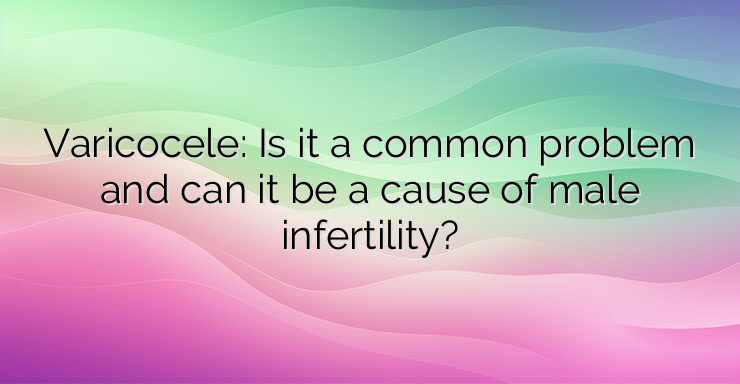A varicocele is a condition where the veins in the scrotum (the pouch of skin that holds the testicles) become enlarged. The venous system in the scrotum is called the plexus pampiniformis. Out of 100 men, 10 to 15 have varicocele. It usually appears during puberty. Veins can increase in size and become more noticeable over time. Varicocele is more common on the left side of the scrotum. The condition can also be seen bilaterally at the same time, but this is rare. Most of the time, the condition does not cause problems and is harmless. Most men have no symptoms. But varicocele is a concern for many reasons. In some cases, this condition can cause infertility or lead to stunted growth of the affected testicle during puberty. Varicose veins of the scrotum can cause fertility problems in about four to ten men. Rarely, it can cause pain that ranges from sharp to dull discomfort and increases with standing and physical exertion, especially for long periods. However, if you have pain or swelling in the scrotal area or notice that the testicles are of different sizes, you should contact a doctor. A number of conditions can cause scrotal enlargement or testicular pain, some of which require immediate treatment, such as testicular torsion. It is still not entirely clear what exactly is the cause leading to the appearance of a varicocele. However, many experts believe that a varicocele forms when the venous valves in the spermatic cord do not work properly and prevent proper blood flow. Normally, venous vessels move blood to the heart and it moves from the bottom up to prevent it from coming back, these vessels are equipped with valves. With a varicocele, the valves do not close “properly” and this leads to backflow of blood and their expansion. Because a varicocele usually causes no symptoms, it often does not require treatment. It may be discovered during a fertility evaluation or routine physical exam. However, if the condition causes pain, testicular atrophy or is a cause of infertility, surgical treatment may be required. The goal of the surgery is to “seal” the affected vein to redirect blood flow to healthy venous vessels. Clear indications for adolescent varicocele repair include progressive testicular atrophy, pain, or abnormal semen analysis results. Operative methods can be: Open surgery. This method of treatment is the most commonly used. The pain from this procedure is usually mild, but may last for several days or weeks. Improvement occurs already after the second day, but it is necessary to refrain from heavy physical work for at least 2 weeks. Laparoscopic surgery. In this case, access is through a small incision in the abdomen. Percutaneous embolization. In this procedure, the affected area is occluded, which cuts off blood flow and repairs the varicocele.This method of treatment is not as widely used as surgery. After embolization, you can often return to work in 2 days and resume a physically active lifestyle in 7 to 10 days.


Leave a Reply